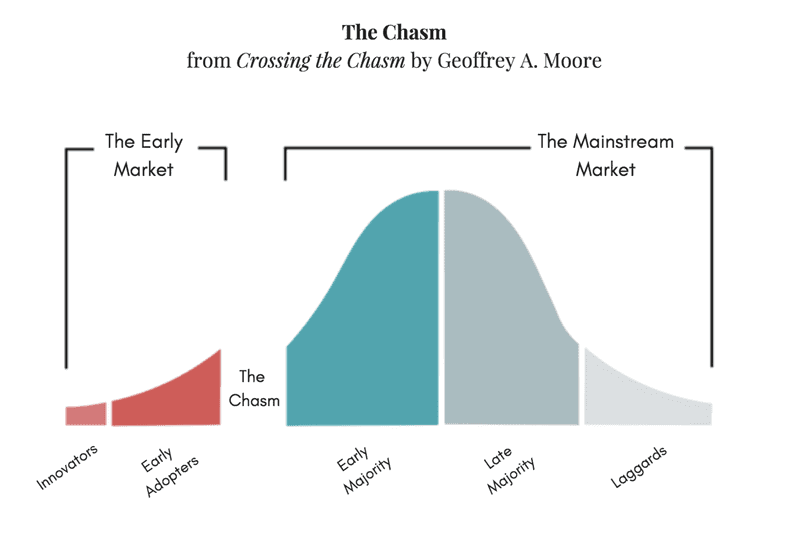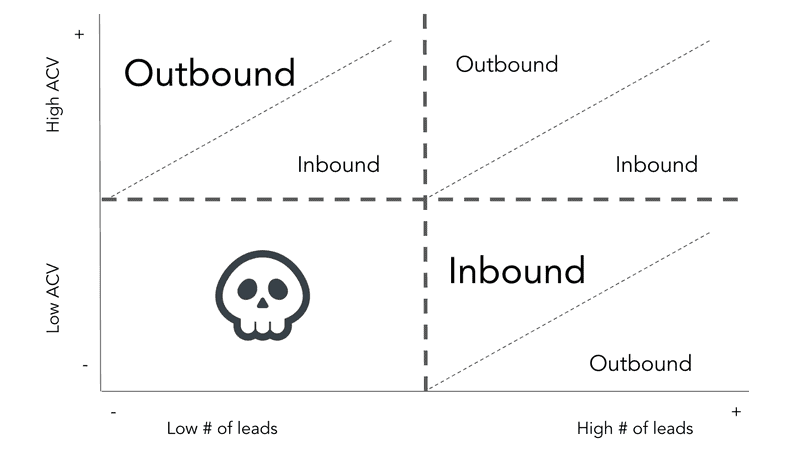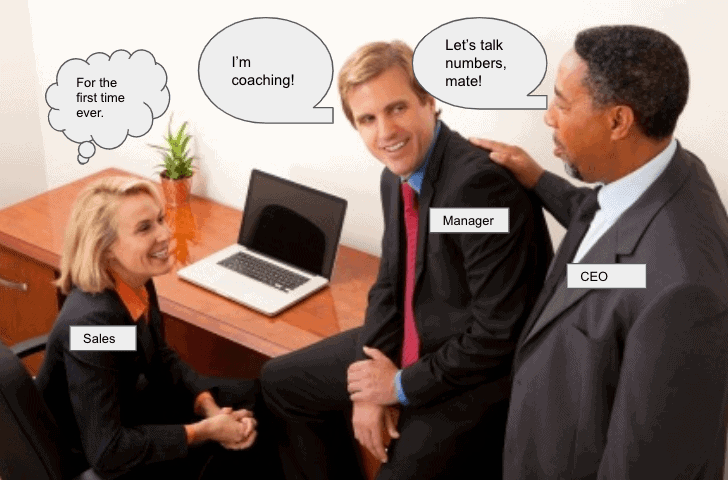In SaaS we tend to think that the game has changed and inbound sales/marketing is the only valid acquisition model to rely on. It is tempting to think that way, but nearly no argument is valid to reject the setup of an outbound sales process.
The rise of inbound
A little background
SaaS has democratized the buying process. Firstly, we do not only sell to Chief Information Officers or CEOs anymore, hoping that they buy our product that might never be used by people on the work floor. Nowadays, the latter actually often instigates the purchasing process by i.e. creating a trial account – the actual user is crucial in SaaS. Secondly, most information about your product is out there and the buyer is more informed than ever. Some statistics say that the buyer has already gone through 60% of the purchasing journey before they get in touch with you. Lastly, SaaS has broken one-time payment for software products into recurring payments that depend on the good-will/satisfaction of the client.
Inbound as a response
We are no longer able to earn back our customer acquisition costs (CAC) in one strike but actually need to work to make customers loyal and successful with our product to earn back our customer acquisition costs. All in all, acquisition cost-awareness and the new dominant buyer persona, the user, demanded from businesses to decrease CAC significantly. The buyer's new level of access to information on Google, Facebook and the like, allowed for accurate targeting by marketing using ads and content – pull or inbound marketing got massively important. The role of sales was redefined to converting those inbound leads as efficiently as possible into paying customers.
The issue with inbound
For a startup on the quest for Go-to-market fit, this model would surely be the only reasonable acquisition model to pick, if there would be an infinite amount of inbound interest out there. However, as Geoffrey A. Moore puts it, there is a finite amount of people that are actively looking to innovate [innovators; early adopters] and the rest certainly needs more persuasion. Additionally, relying on i.e. SEM to grow will inevitably lead you to pay more per keyword in order to be ranked better and to tap into expensive markets such as the US to keep your lead numbers growing. Thus, a once-lucrative channel would quickly become much more expensive.

Startups need to cross the chasm to become truly successful and to be honest, most companies fall into the chasm.
There are two options to engage with the mainstream market, once the early adopters run out. 1. Long-term funnel nurturing inbound marketing a la Hubspot or 2. Outbound sales.
Option I: Long-term nurturing inbound marketing
Hubspot itself says that the time lack between the first time that a lead engages with their content and a sales rep engaging with the lead is 12 months – and that is an optimized funnel. This option requires great marketing expertise and funding to finance the time lag that most companies simply do not have.
Option II: Outbound
Outbound sales, either through SDRs or full-cycle reps (the topic of another article) is the traditional way of selling. So it shouldn't be too difficult to implement it right? You guessed wrong, most SaaS companies rely on inbound first and have no idea how to set up an outbound machine.
I don't have a sufficient level of marketing expertise to discuss how and if nurturing can be done well. Nevertheless, I do know that I have seen very well set up outbound sales processes in early-stage companies, whereas no familiar company of mine has had an optimized content funnel a la Hubspot. Hence, I argue that outbound sales is a more pragmatic and sane solution.
Prejudices against outbound
Outbound? But what about my CAC?
SaaS companies mostly start selling to the SMB market at a lower price point between 500$ and 10k$ ACV, which makes arguably higher costs that are involved in doing outbound sales very difficult to recoup. Jerry Chen of Greylock Partners calls it: being in the 'dead zone' when you are in between the two price points mentioned before. This is a commonly used excuse to not start on outbound sales, as it might be too expensive to try. However, the contrary is true. Tom Tunguz actually refutes the existence of 'dead zones' by having analyzed the ACVs of public SaaS companies and their market cap and he found no correlation and thus no evidence for a dead zone.
This actually resonates with the opinion of Aaron Ross, the god-father of SaaS sales, who wrote in his book 'Predictable Revenue' that the threshold to start doing outbound is 10k$ in lifetime value. This is based on having a healthy LTV:CAC ratio, which should be around 3 – thus, we'd be allowed to spend 3.333,00$ to acquire one new customer. From a European stand up we need to factor in that salary costs are much lower than in silicon valley, where Ross' rule of thump originates.
Average salaries of reps in San Francisco vs. i.e. Amsterdam differ by a factor of 3. I admit this is a back-of-the-envelope calculation, but one can argue that European SaaS companies are allowed to do outbound sales if the lifetime value of a client is above 3k€.
If you are, like me, a bit suspicious of lifetime values think of payback periods then. A good payback period is <12 months and I have seen outbound payback periods of 6-8 months in my client companies.
Outbound stinks? No.
Any outreach without relevance for the prospect stinks. Any outreach that is relevant helps.
The following 2×2 matrix helps to make the case that relevance is the decisive factor to make outbound smell good:

If you blast out messages of low relevance to the recipient, no matter if you have referenced his favorite football club or not – you will be annoying them. If you put in the time to understand the pain points that your target group experiences, you will be regarded as helpful.
Your target audience doesn't like outbound outreach?
Some professions seem to hate being sold to more than others, such as developers. The acquisition model of most dev-focussed products is mostly built around free trial or freemium that organically grows with usage. Nevertheless, outbound can also be applied in this context by either selling to CIOs or agencies that provide development services. Moreover, I'd argue again that a highly relevant and knowledgable outreach would also be successful with this target audience. Also, if you are working in a niche market, your chances of getting to your Ideal Customer Profile quickly are certainly much higher with outbound than with inbound marketing.
Conclusion
Thus, I conclude that outbound should be part of almost every commercial SaaS team. Furthermore, to build your outbound machine early will allow you to smoothen the dip in growth that naturally occurs once you switch to the 'early majority' of your target market.
In some scenarios, outbound should be leading the efforts such as in niche markets; whereas in more mass-market scenarios it should be considered as a supplement acquisition strategy, for clearly identified target groups (clear pains identified etc.) given that the ACV is high enough.

Want to learn more?
Tom van Berkel and I are organizing a 1-day course on the 18th of March in Amsterdam.
Visit the course website here or get tickets here for more information or schedule a chat with me via the following link to discuss your learning objectives:



